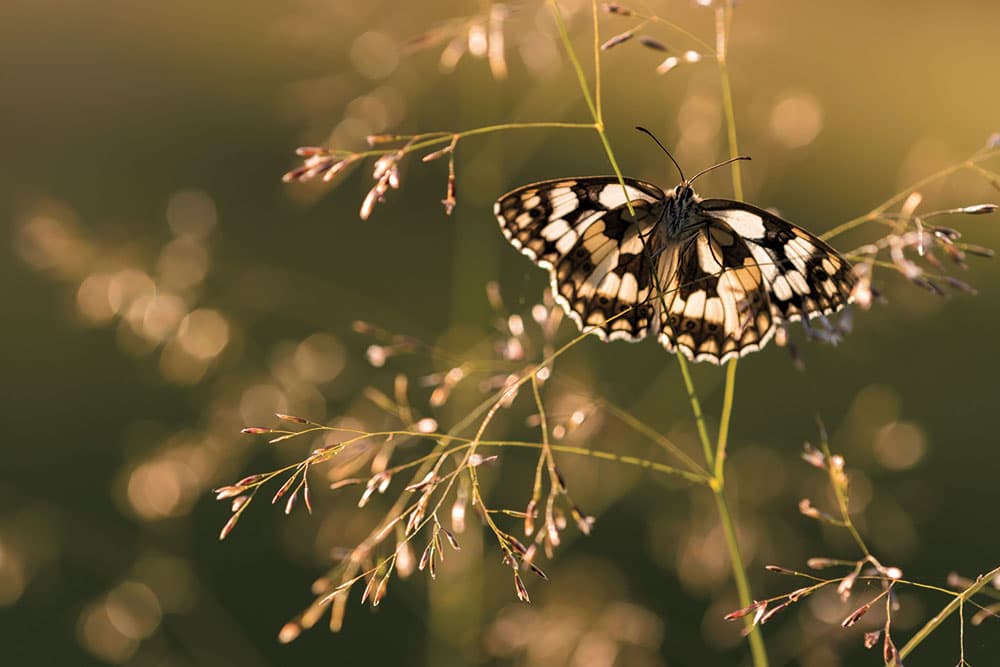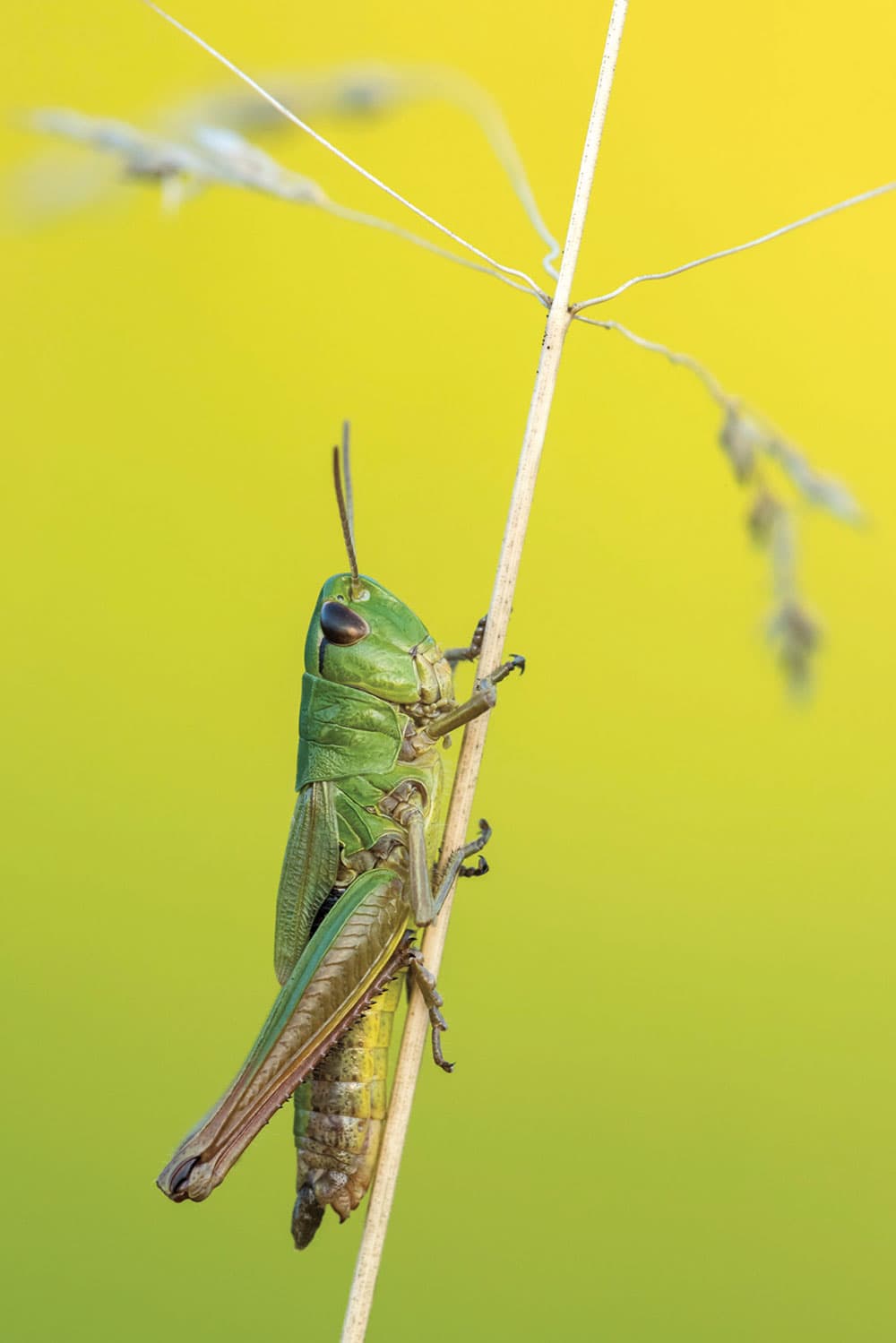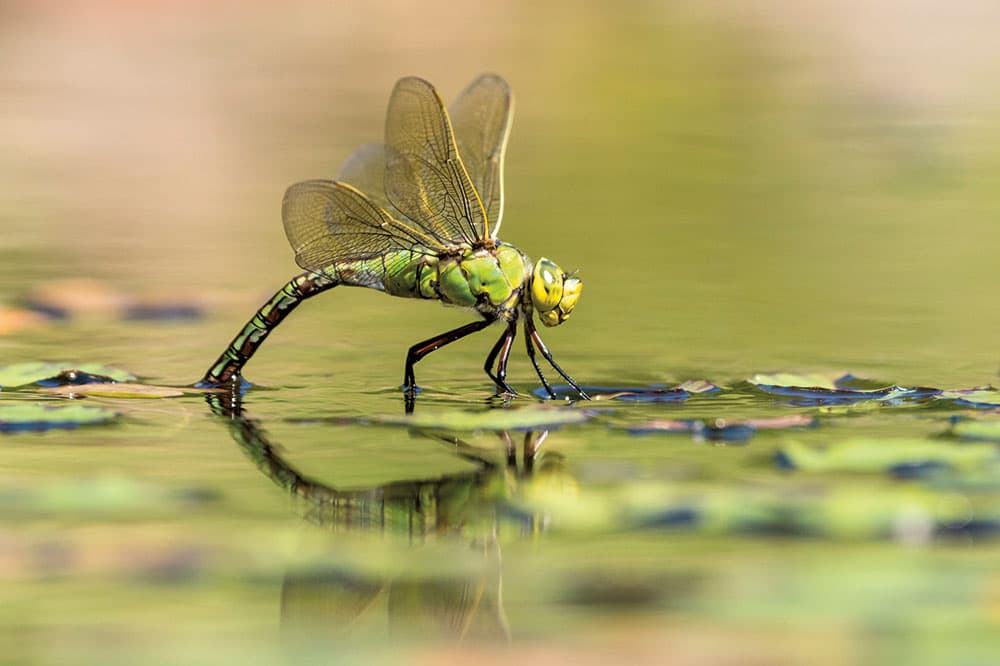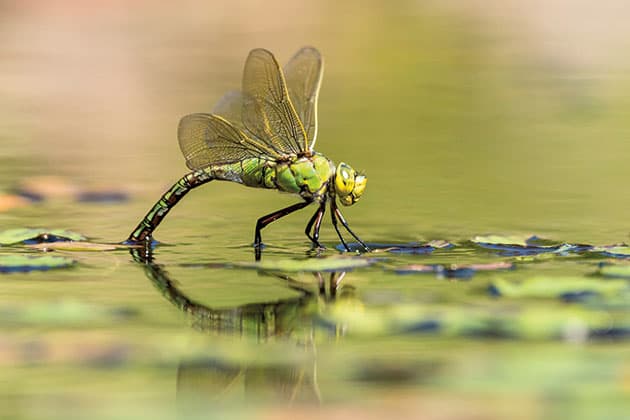Little critters have always fascinated me. I’ve been shooting insects since I was 10 years old, using inexpensive close-up filters at first to enable me to achieve frame-filling results. When I was 11, I won BBC’s Countryfile inaugural photography competition with my photograph of two emperor dragonflies. I enjoy capturing the exquisite beauty, intricacy, shape and form of insects. I favour natural light and photograph my subjects in situ in the wild to cause minimum disturbance. I authored the book Digital Macro and Close-up Photography and have won awards in competitions such as Wildlife Photographer of the Year, British Wildlife Photography Awards and International Garden Photographer of the Year with my close-ups of insects.

Marbled White butterfly (Melanargia galathea) in the evening light, Dunsdon Nature Reserve, Devon. Credit: Ross Hoddinott
1. Use backlight
Backlighting really suits insects, as it tends to highlight their form, detail and intricacy. It particularly suits the translucency of butterflies. Low early-morning or late-evening light is perfect for shooting backlit subjects – the light’s quality is warmer and softer too. Position yourself carefully, so you sandwich your subject between the light and your camera. TTL metering can be fooled in tricky light, so check your histogram and apply positive exposure compensation if images are underexposed.
2. Get up early and stay out late
Insects are at their least active and most approachable early in the morning and late in the evening, when their bodies are cool and they are generally settled. Butterflies will roost among tall grasses or on flowers, while damselflies and mayflies will settle among reeds close to water. Tread and search carefully. Once you’ve located a suitable subject, you should be able to get within the best distance to take a picture relatively easily. You may even be able to set up a tripod, which will greatly aid with framing and focusing.
3. Keep it simple
In all my years of experience with shooting wildlife, I’ve found that the best insect close-ups are simple in their construction. To help your subject really stand out, opt for a clean, diffused backdrop, free of clutter or distraction. You could photograph insects with distance between them and the surroundings: for example, select an angle where you can contrast them against sky, water or distant foliage. Also, set the largest practical aperture to help throw your subject’s surroundings attractively out of focus.

Credit: Ross Hoddinott
4. Maximise depth of field
Depth of field is inherently shallow at higher magnifications. To help maximise the zone of acceptable sharpness (for any given aperture) try to keep your camera parallel to your subject. Why? Well there is only one geometric plane of complete sharpness, and you will normally want to place as much of your subject within this plane as possible. If you hold your camera at an angle in relation to your subject, wing tips and tails will quickly drift out of focus.
5. Pristine subjects
In close-up, even the smallest imperfection will be highlighted. Therefore, it is normally advisable to only photograph insects that are in pristine condition. Butterflies lose some of their vibrancy and wings tend to get damaged as they near the end of their adult stage. Try to photograph insects within days of their emergence. By researching the life cycle of potential subjects, you can plan to visit suitable habitats at the right time of year.

Meadow Grasshopper (Chorthippus parallelus), Vealand farm, Devon. Credit: Ross Hoddinott
6. Stalking subjects
During the day, when it’s warm and insects are busy, shoot handheld. It can be frustrating stalking insects, so be patient and persevere. When you move into position, try not to disturb the surrounding vegetation, and avoid casting a shadow across the subject. Increase ISO to generate a sufficiently fast shutter to eliminate camera and/or subject motion. I would recommend a minimum speed of 1/250sec when working handheld in close-up.

Female emperor dragonfly (Anax imperator) laying eggs on garden pond in Broxwater, Cornwall). Credit: Ross Hoddinott
7. Capture behaviour
Try to capture elements of insect behaviour. Dragonflies are difficult to capture in flight, but it can be possible using a long telephoto and shooting continuous bursts with a fast shutter. Mating butterflies and damselflies add symmetry or shape to compositions. In the spring, you’ll find damselfly larvae clinging to reeds by the water’s edge and hatching into their adult form. Close-ups of dragonflies or spiders devouring prey can also be fascinating.
Kit list
- Telephoto macro A telephoto macro is ideal for insects. 100mm and above will generate a larger working distance from the subject and minimise the risk of disturbing your subject.
- Small LED Small LED devices, like Manfrotto’s Lumimuse range, are great lighting aids. They can be camera-mounted or handheld. With a continuous light source, you can preview the effect before triggering the shutter.
- Geared head The design and type of tripod head you use is down to personal taste, but personally I favour a geared head for close-ups. They allow you to make very precise micro adjustments to composition, which suits the fiddly nature of close-up work.







